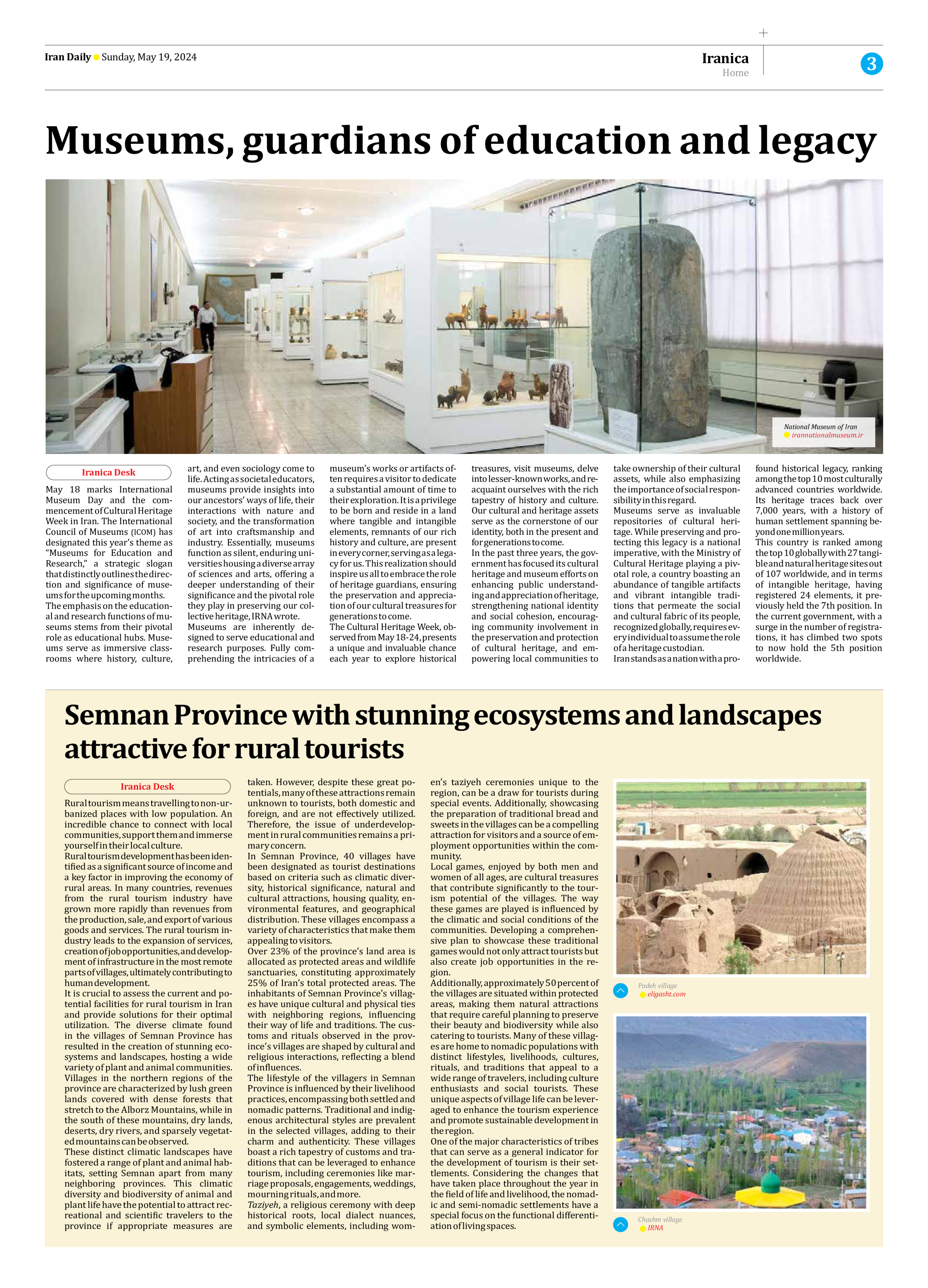
Semnan Province with stunning ecosystems and landscapes attractive for rural tourists
Rural tourism means travelling to non-urbanized places with low population. An incredible chance to connect with local communities, support them and immerse yourself in their local culture.
Rural tourism development has been identified as a significant source of income and a key factor in improving the economy of rural areas. In many countries, revenues from the rural tourism industry have grown more rapidly than revenues from the production, sale, and export of various goods and services. The rural tourism industry leads to the expansion of services, creation of job opportunities, and development of infrastructure in the most remote parts of villages, ultimately contributing to human development.
It is crucial to assess the current and potential facilities for rural tourism in Iran and provide solutions for their optimal utilization. The diverse climate found in the villages of Semnan Province has resulted in the creation of stunning ecosystems and landscapes, hosting a wide variety of plant and animal communities. Villages in the northern regions of the province are characterized by lush green lands covered with dense forests that stretch to the Alborz Mountains, while in the south of these mountains, dry lands, deserts, dry rivers, and sparsely vegetated mountains can be observed.
These distinct climatic landscapes have fostered a range of plant and animal habitats, setting Semnan apart from many neighboring provinces. This climatic diversity and biodiversity of animal and plant life have the potential to attract recreational and scientific travelers to the province if appropriate measures are taken. However, despite these great potentials, many of these attractions remain unknown to tourists, both domestic and foreign, and are not effectively utilized. Therefore, the issue of underdevelopment in rural communities remains a primary concern.
In Semnan Province, 40 villages have been designated as tourist destinations based on criteria such as climatic diversity, historical significance, natural and cultural attractions, housing quality, environmental features, and geographical distribution. These villages encompass a variety of characteristics that make them appealing to visitors.
Over 23% of the province’s land area is allocated as protected areas and wildlife sanctuaries, constituting approximately 25% of Iran’s total protected areas. The inhabitants of Semnan Province’s villages have unique cultural and physical ties with neighboring regions, influencing their way of life and traditions. The customs and rituals observed in the province’s villages are shaped by cultural and religious interactions, reflecting a blend of influences.
The lifestyle of the villagers in Semnan Province is influenced by their livelihood practices, encompassing both settled and nomadic patterns. Traditional and indigenous architectural styles are prevalent in the selected villages, adding to their charm and authenticity. These villages boast a rich tapestry of customs and traditions that can be leveraged to enhance tourism, including ceremonies like marriage proposals, engagements, weddings, mourning rituals, and more.
Taziyeh, a religious ceremony with deep historical roots, local dialect nuances, and symbolic elements, including women’s taziyeh ceremonies unique to the region, can be a draw for tourists during special events. Additionally, showcasing the preparation of traditional bread and sweets in the villages can be a compelling attraction for visitors and a source of employment opportunities within the community.
Local games, enjoyed by both men and women of all ages, are cultural treasures that contribute significantly to the tourism potential of the villages. The way these games are played is influenced by the climatic and social conditions of the communities. Developing a comprehensive plan to showcase these traditional games would not only attract tourists but also create job opportunities in the region.
Additionally, approximately 50 percent of the villages are situated within protected areas, making them natural attractions that require careful planning to preserve their beauty and biodiversity while also catering to tourists. Many of these villages are home to nomadic populations with distinct lifestyles, livelihoods, cultures, rituals, and traditions that appeal to a wide range of travelers, including culture enthusiasts and social tourists. These unique aspects of village life can be leveraged to enhance the tourism experience and promote sustainable development in the region.
One of the major characteristics of tribes that can serve as a general indicator for the development of tourism is their settlements. Considering the changes that have taken place throughout the year in the field of life and livelihood, the nomadic and semi-nomadic settlements have a special focus on the functional differentiation of living spaces.







